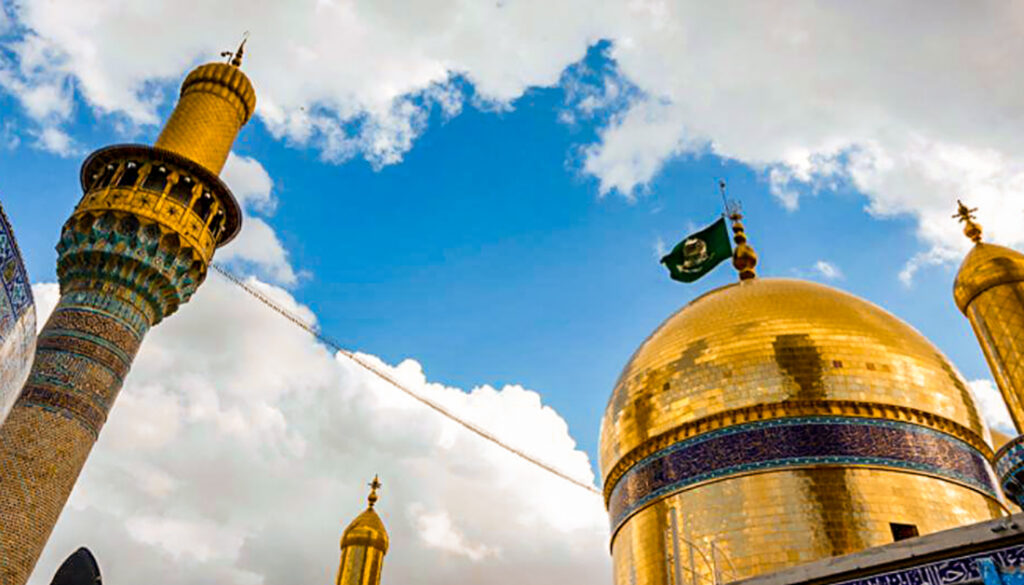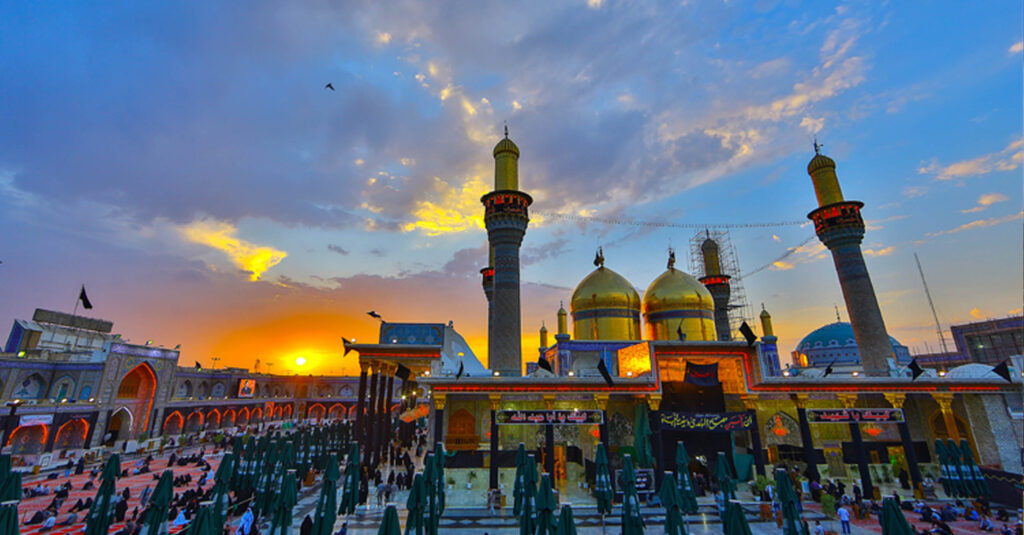Dear visitor… You are heading to the north of the capital, Baghdad. You must be fascinated by the atmosphere of the city of Kadhimiya, with its majestic scene that inspires reverence in the soul, its popular markets that are subject to (folkloric) flavor, and its heritage houses surrounded by chanasheels. Don’t you see with us that it is useful to look with us from the window of this city? On part of its history and the history of its scene called (the Kadhimi scene),
Al-Kadhimiya is a city steeped in the depths of distant history.. Before the construction of the city of Baghdad, it was known as (Al-Shunizi), which is: an Arabic name that means the black seed.. Since the Abbasid caliph Abu Jaafar Al-Mansur started laying the bricks of the round city of Baghdad in the year (145 AH – 762 AD) on the side west of the Tigris River, he made from that area cemeteries that embrace the remains of his family and relatives, and it was called (the cemeteries of Quraish), and among those who included their wealth were Jaafar bin Al-Mansur, And Sayyid Zubaydah, the wife of the caliph Harun al-Rashid, and when Imam Musa bin Jaafar (pbuh) who died in the year (183 AH – 799 AD) was buried there, and who was nicknamed (Al-Kazim) for his forbearance and forgiving offense and repressing anger, and after him his grandson, Imam Muhammad al-Jawad (pbuh). He died in the year (219 AH – 834 AD), and they are both of the people of the noble Prophet’s House. They grew up around their shrine in a town known as (Al-Kadhimiya), as the two imams together were called (Al-Kazimin) as well as (Al-Jawaden) for their generosity and generosity.

As you enter the Kadhimiya Kindergarten, you feel a sense of majesty and fascination as soon as your sight falls on the tarmat, pavilions, kiosks and arcades decorated with faience motifs engraved with floral and geometric inscriptions and Quranic verses, in addition to the exquisite decorations made of mirrors and precious metals such as gold and silver. And if you browsed the historical references, you would have noticed that the Abbasid caliph, Al-Mu’tasim Billah, had ordered the construction of this garden, which consisted of graves and porticoes.
The two famous Al-Mashhad Al-Kadhimi clocks come, one of which overlooks the Qibla Gate and the second on the Al-Murad Gate on the eastern side after the minarets and the golden domes that the kindergarten embraces in terms of historical and aesthetic importance. These two clocks were installed in the late nineteenth century, specifically (1301 AH – 1883 AD). And a tower was built for each of them in the style of Arab-Islamic architecture. It remains for us to say that the Al-Kadhimiya kindergarten has become today a sign of the art of Islamic architecture, in which the features of magnificence and splendor are evident. Specifically (1301 AH – 1883 AD), and a tower was built for each of them in the style of Arab Islamic architecture. It remains for us to say that the Al-Kadhimiya kindergarten has become today a sign of the art of Islamic architecture, in which the features of magnificence and splendor are evident.
Source: Guide to religious tourism in Iraq 1992





